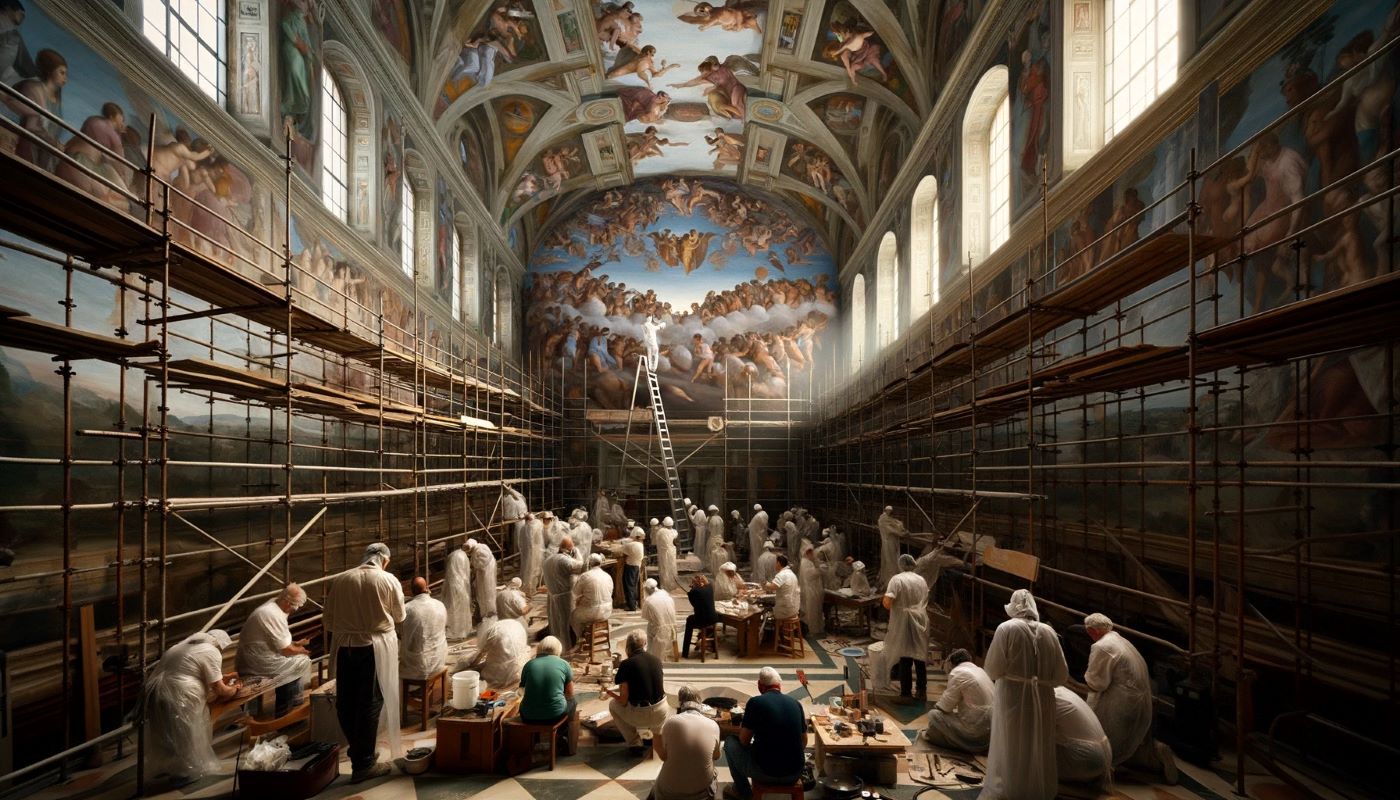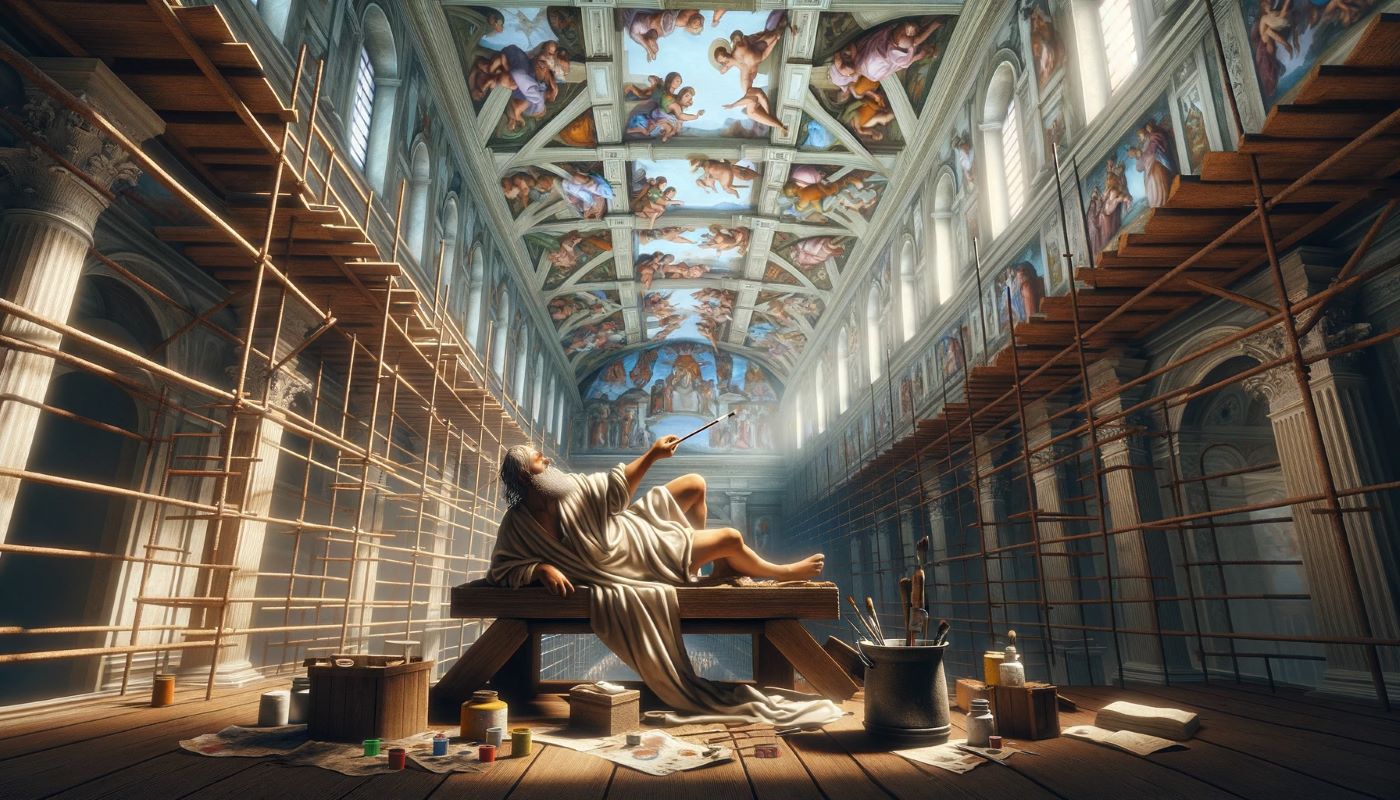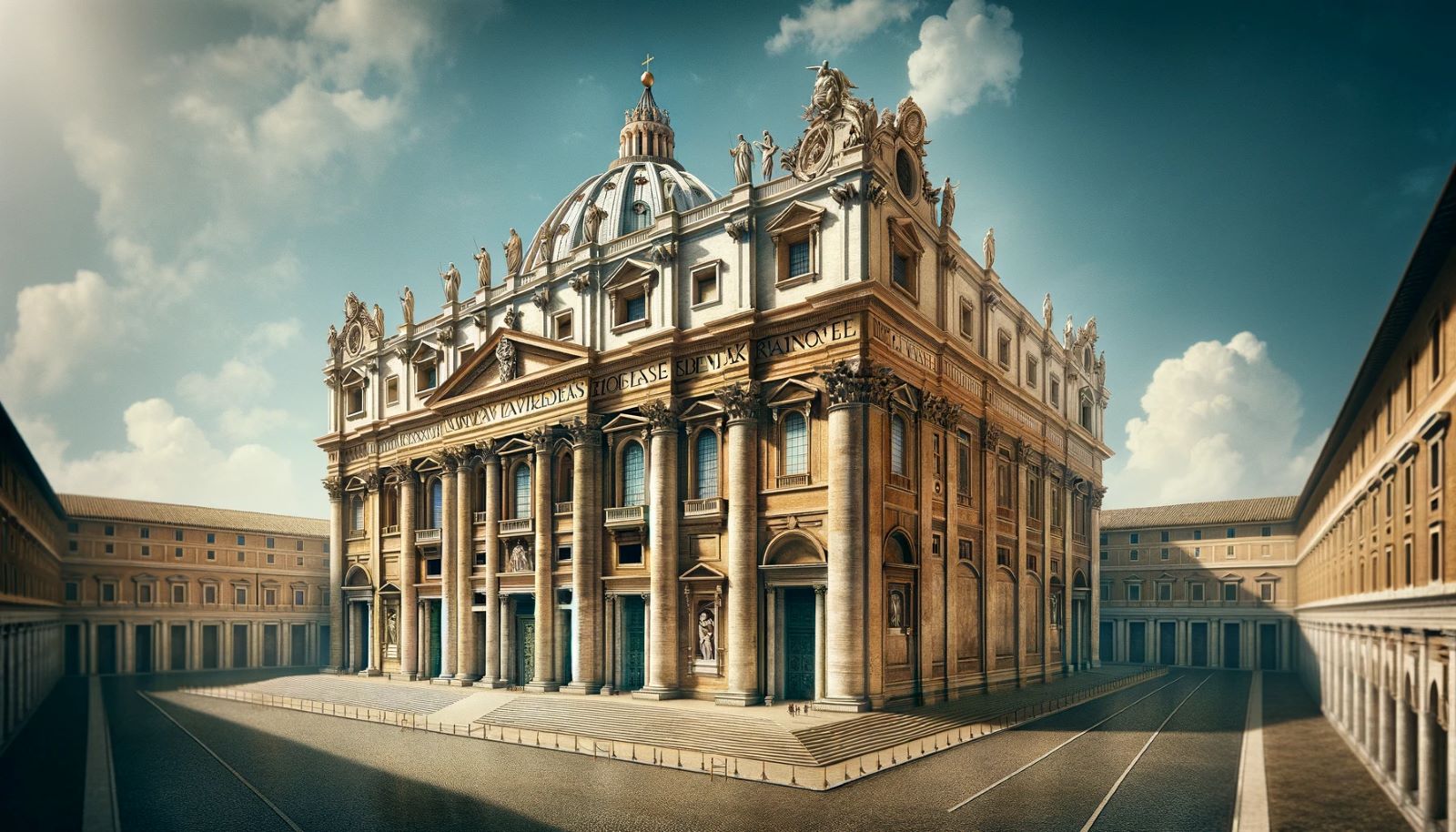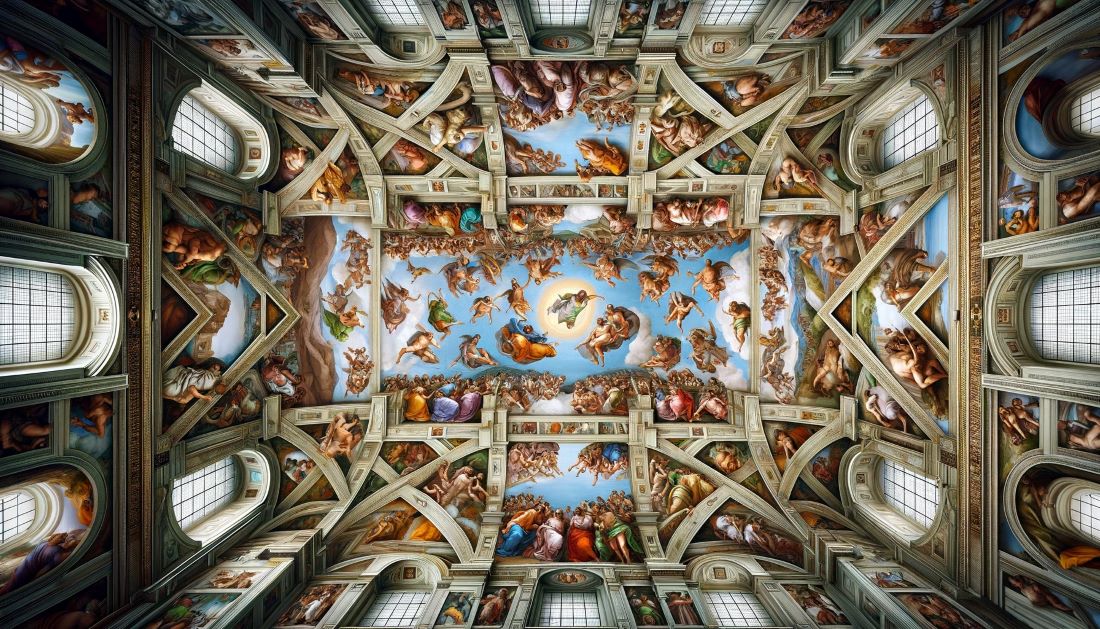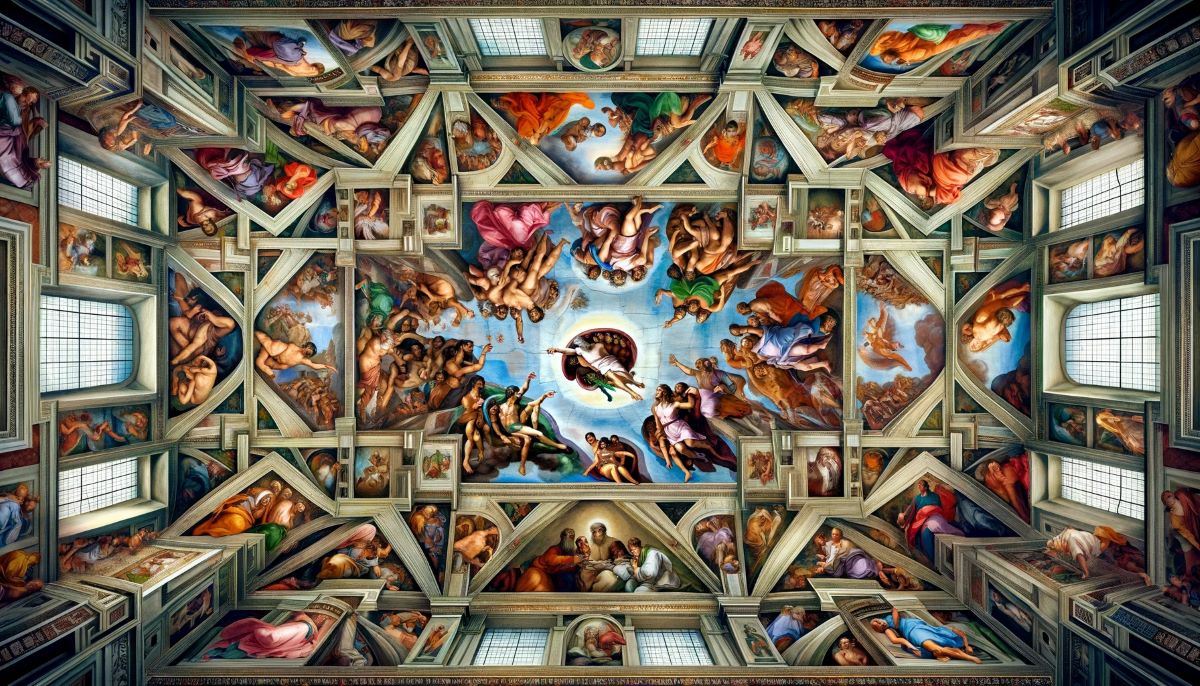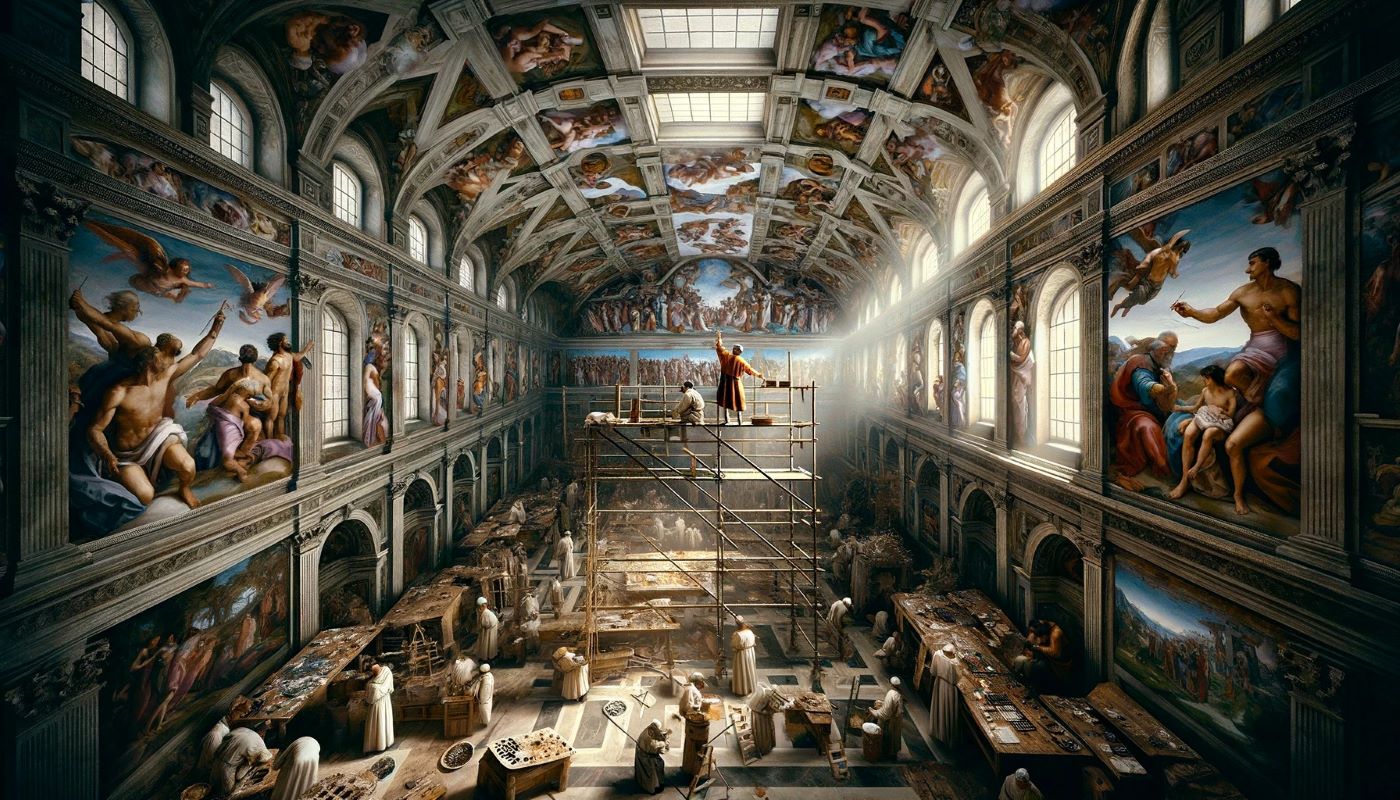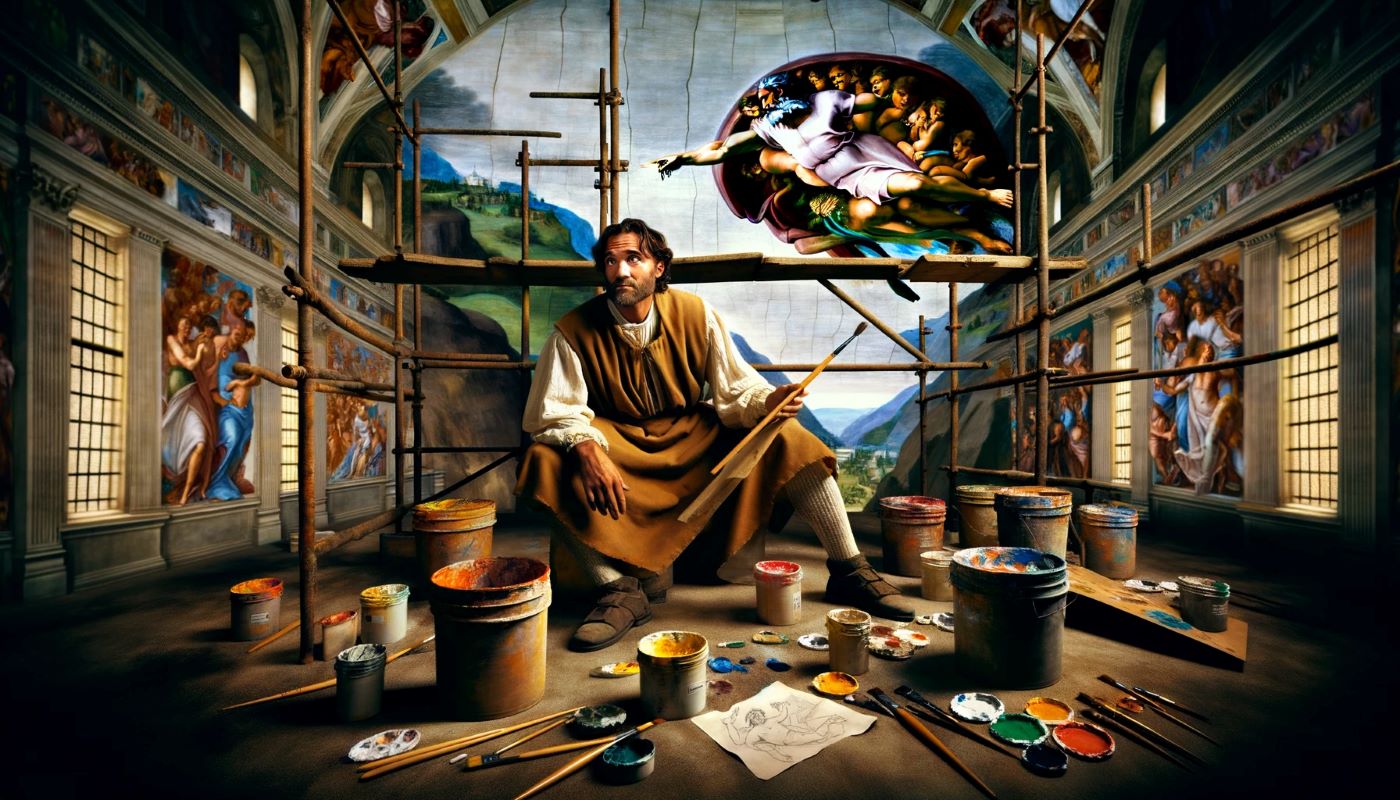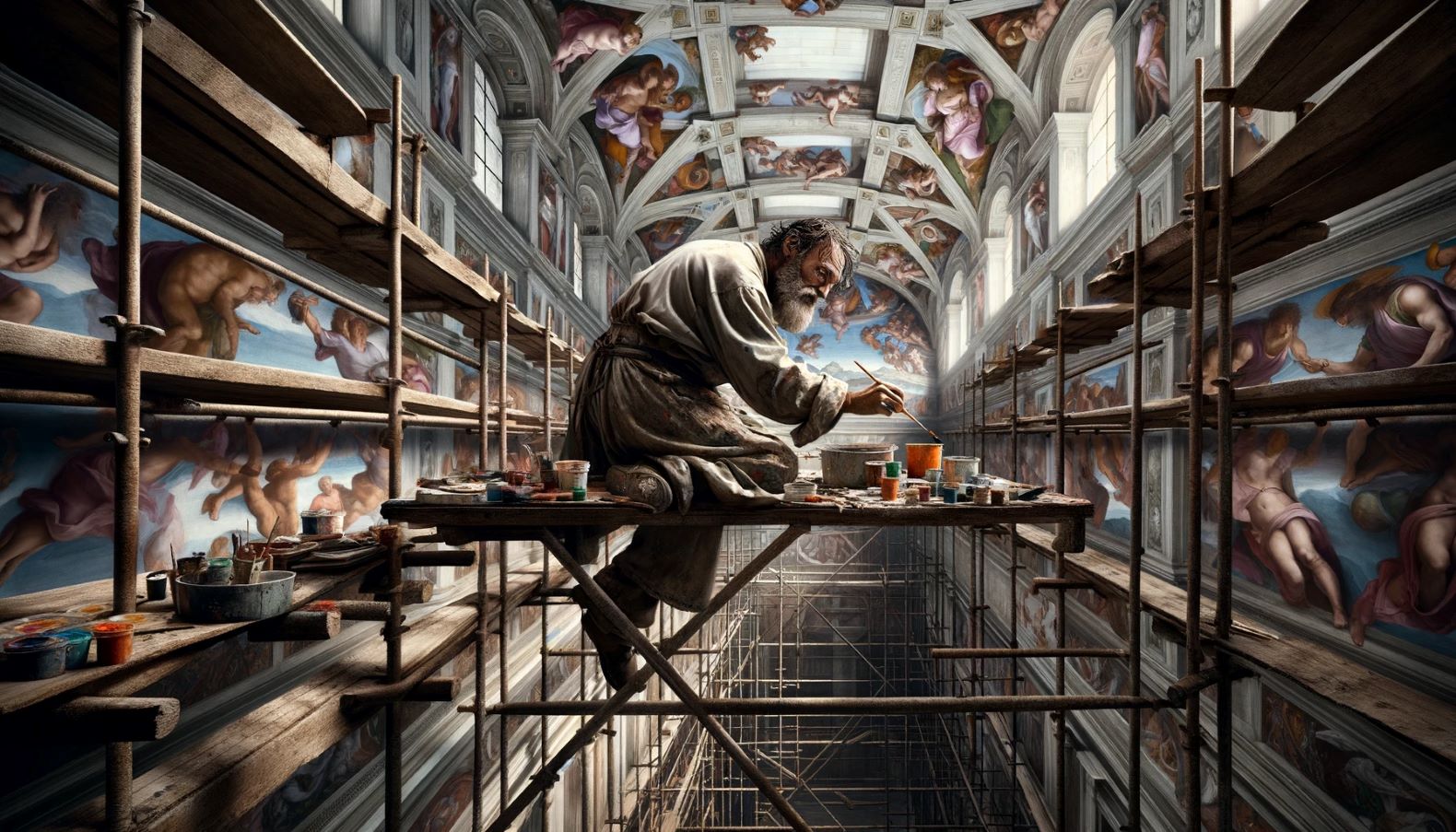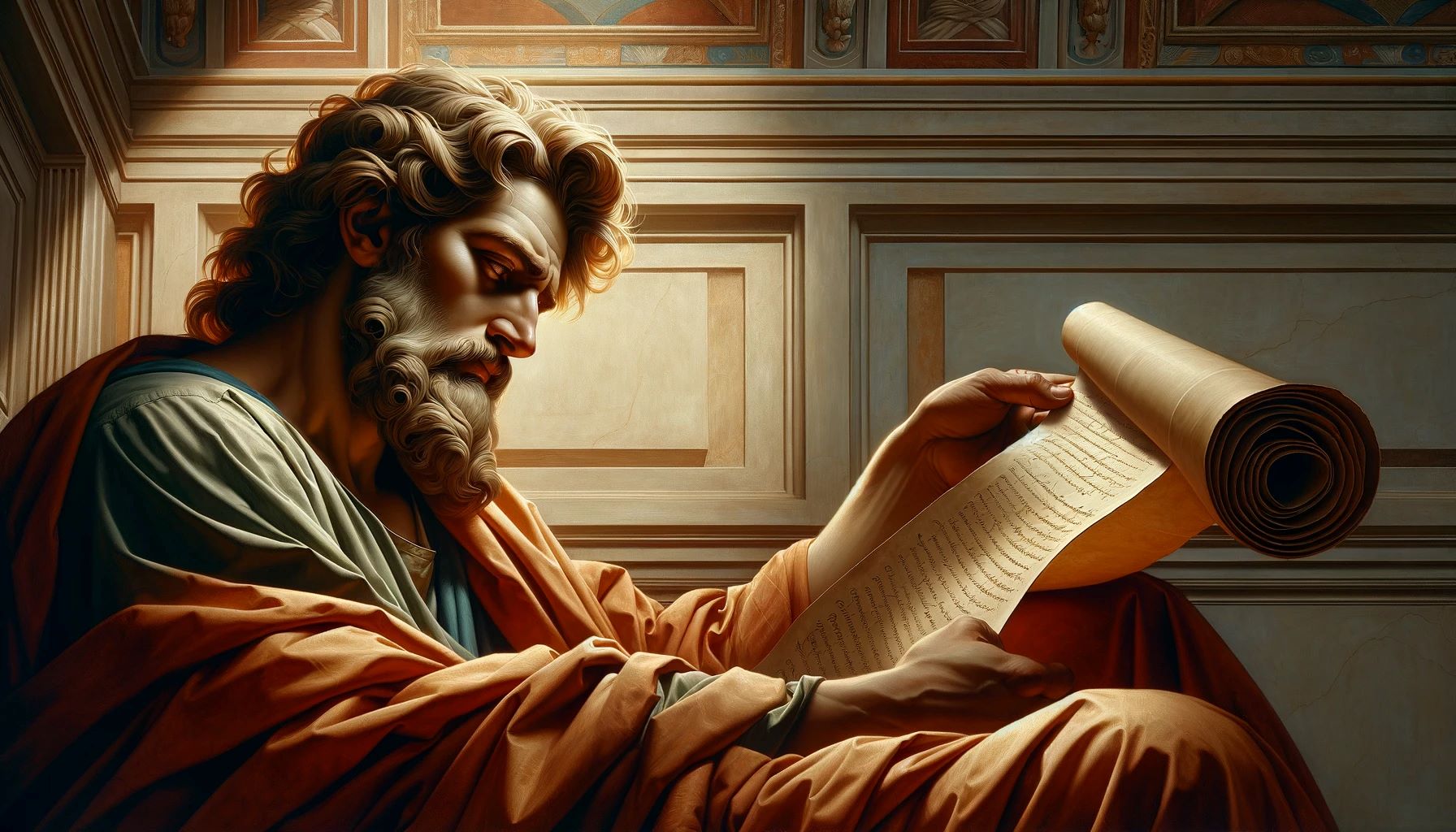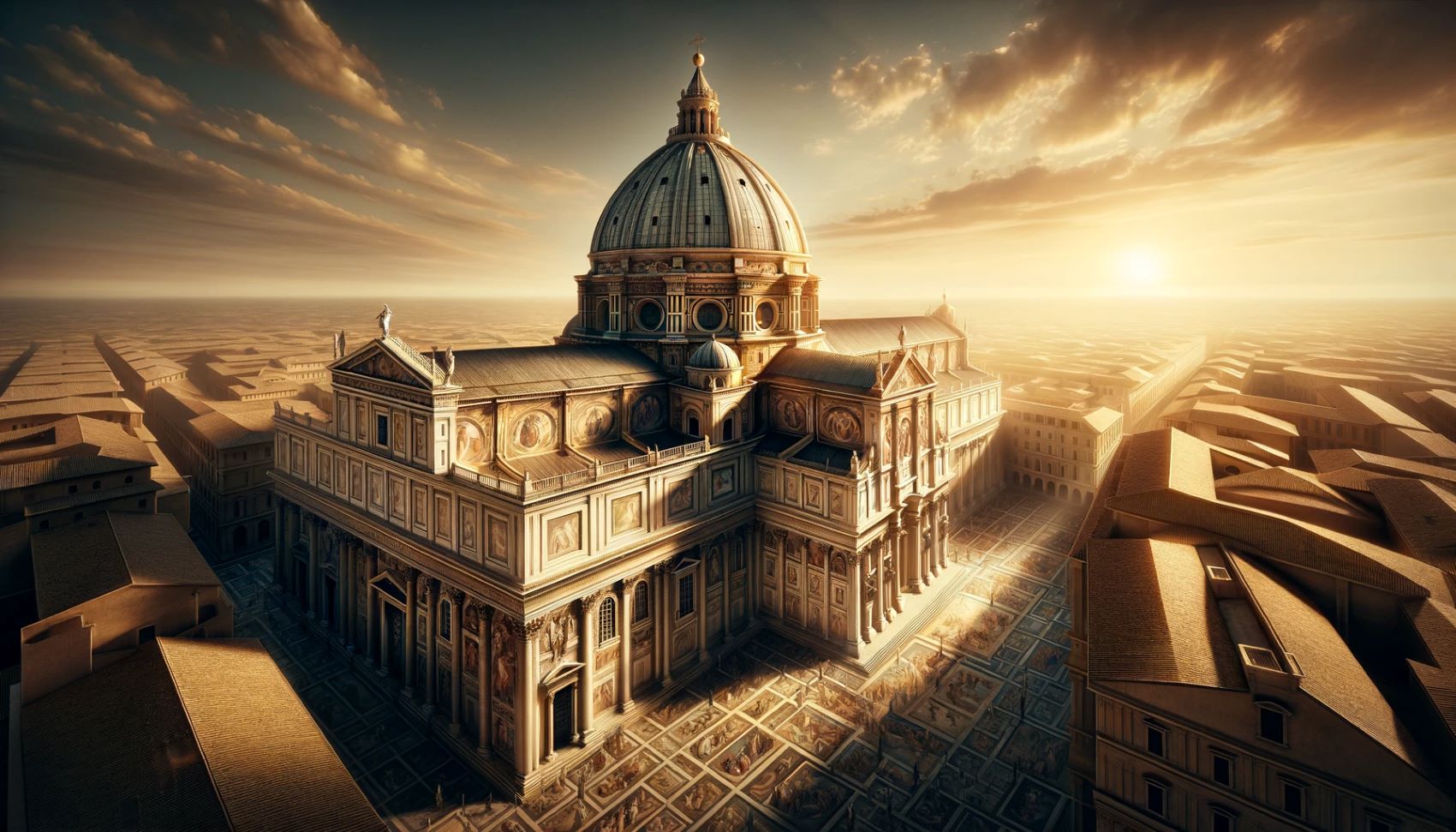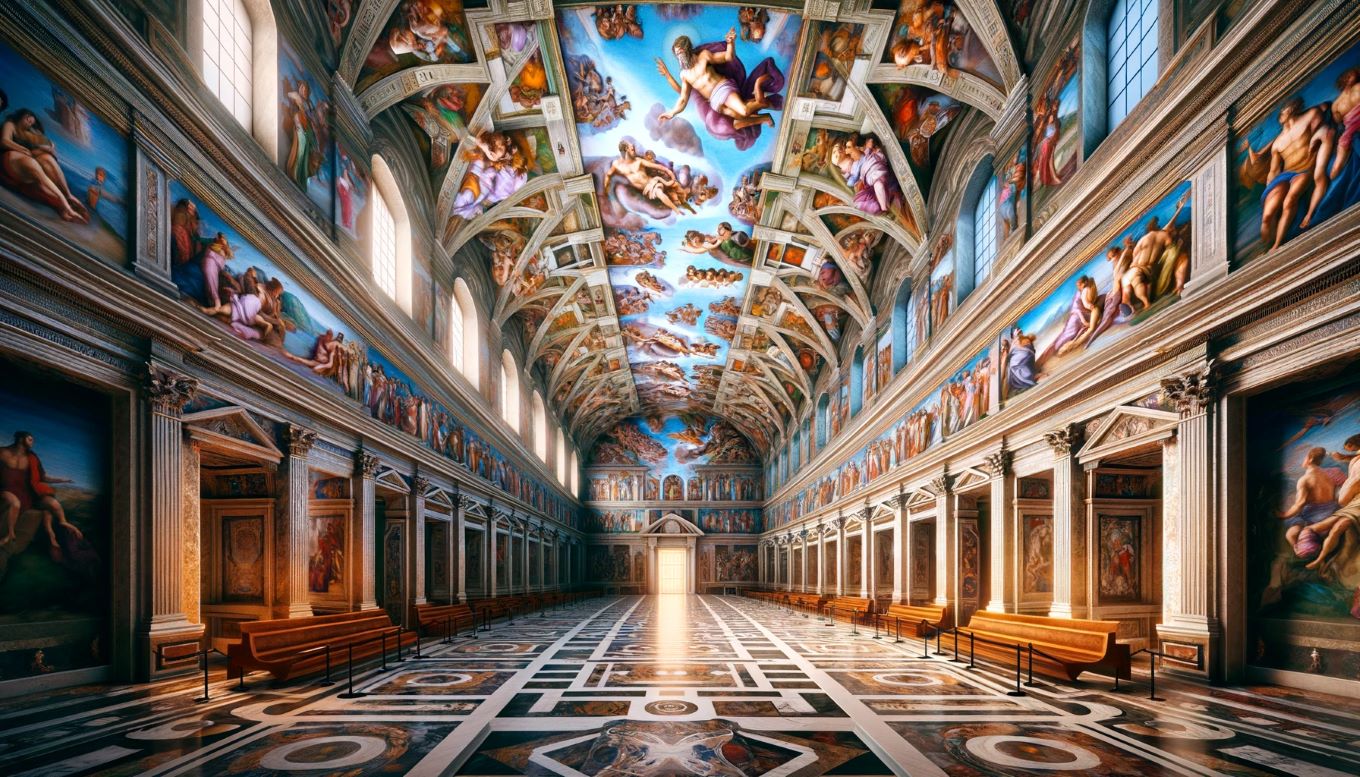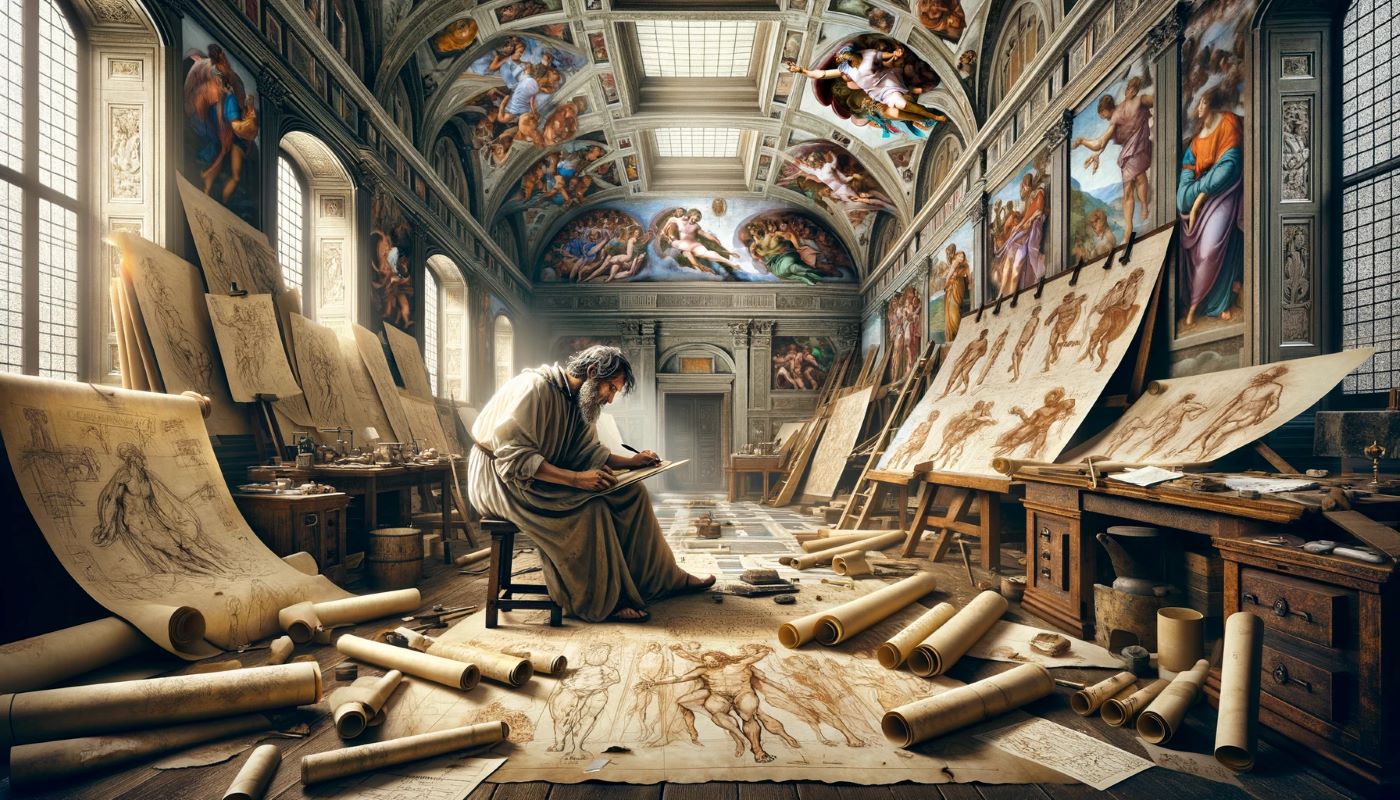Home>Arts and Culture>How Do You Get To The Sistine Chapel
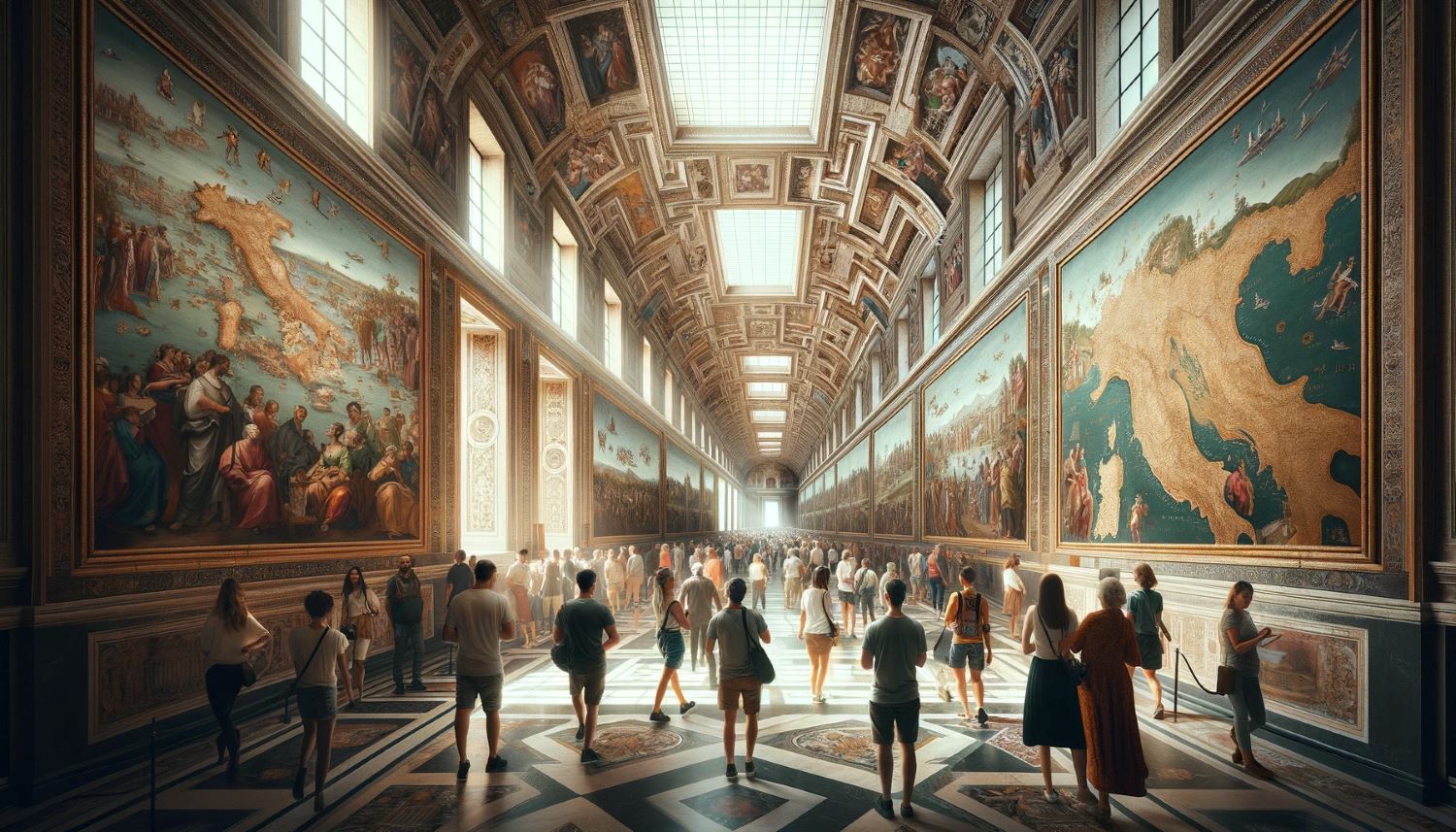

Arts and Culture
How Do You Get To The Sistine Chapel
Published: March 4, 2024
Peter Smith, Editorial Director at Christian.net, combines deep insights into faith, politics, and culture to lead content creation that resonates widely. Awarded for his contributions to religious discourse, he previously headed a major organization for religious communicators, enhancing dialogue on faith's societal impacts.
Discover the best way to reach the Sistine Chapel and immerse yourself in the arts and culture of this iconic Vatican City attraction. Uncover the secrets of Michelangelo's masterpiece and plan your visit today.
(Many of the links in this article redirect to a specific reviewed product. Your purchase of these products through affiliate links helps to generate commission for Christian.net, at no extra cost. Learn more)
Table of Contents
Planning Your Visit to the Sistine Chapel
So, you're planning to visit the Sistine Chapel? That's fantastic! It's a place of immense historical and religious significance, and the artwork within is truly awe-inspiring. But before you go, there are a few things you should consider to make the most of your visit.
-
Booking Tickets: The first step in planning your visit to the Sistine Chapel is to book your tickets in advance. The chapel is located within the Vatican Museums, and these can get very crowded, especially during peak tourist seasons. Booking your tickets online can save you from waiting in long lines and ensure that you have a guaranteed entry time.
-
Timing Your Visit: Consider the time of day you plan to visit the Sistine Chapel. Mornings are generally less crowded, so if you can, aim for an early visit to avoid the masses of tourists. This will allow you to appreciate the artwork in a more serene atmosphere.
-
Dress Code: Remember that the Sistine Chapel is a holy site, and as such, there is a strict dress code in place. Both men and women are required to cover their shoulders and knees. So, make sure to dress appropriately to avoid any issues when entering the chapel.
-
Guided Tours: While it's possible to explore the Sistine Chapel on your own, consider joining a guided tour. A knowledgeable guide can provide valuable insights into the history and significance of the artwork, enhancing your overall experience.
-
Accessibility: If you have any mobility concerns, it's worth noting that the Sistine Chapel is located at the end of the Vatican Museums, and the route involves a considerable amount of walking. However, the museums do offer accessibility services, so be sure to inquire about these options when planning your visit.
By taking these factors into account when planning your visit to the Sistine Chapel, you can ensure a more enjoyable and enriching experience.
Navigating the Vatican Museums
When it comes to navigating the Vatican Museums, it's essential to have a game plan to make the most of your visit. The museums are vast and house an incredible collection of art and historical artifacts, so it's easy to feel overwhelmed. Here are some tips to help you navigate the Vatican Museums effectively:
-
Map and Guide: Upon entering the Vatican Museums, be sure to pick up a map and guide. These resources will help you orient yourself within the expansive museum complex and identify the key points of interest, including the route to the Sistine Chapel.
-
Follow the Signs: The Vatican Museums are well-marked with directional signs that guide visitors through the various galleries and exhibits. Follow these signs to stay on track and ensure that you don't miss any important highlights along the way.
-
Highlights and Must-See Exhibits: Given the sheer size of the Vatican Museums, it's helpful to prioritize the exhibits and artworks you most want to see. The museums are home to renowned pieces such as the Raphael Rooms, the Gallery of Maps, and the Belvedere Courtyard, so plan your route accordingly to include these must-see attractions.
-
Crowd Management: The Vatican Museums can get extremely crowded, especially during peak tourist seasons. To navigate the crowds more effectively, consider visiting early in the morning or later in the afternoon to avoid the busiest times. Additionally, try to plan your visit on a weekday rather than a weekend for a slightly less hectic experience.
-
Rest Areas and Facilities: As you navigate the Vatican Museums, take note of the rest areas and facilities available. There are cafés, restrooms, and seating areas throughout the complex, providing opportunities to take a break and recharge before continuing your exploration.
By keeping these tips in mind, you can navigate the Vatican Museums with greater ease and ensure that you make the most of your visit to this extraordinary cultural institution.
Understanding the History of the Sistine Chapel
The history of the Sistine Chapel is as rich and complex as the breathtaking artwork that adorns its walls and ceiling. Understanding the historical context of this iconic religious site is essential for fully appreciating its significance. Here's a closer look at the compelling history behind the Sistine Chapel:
-
Origins and Construction: The Sistine Chapel was commissioned by Pope Sixtus IV in the late 15th century and takes its name from this influential pontiff. Its construction was part of a larger project to create a grand new space for papal ceremonies and gatherings. The chapel was designed by a team of renowned architects, including Baccio Pontelli and Giovannino de Dolci, and its construction was completed in 1481.
-
Religious Significance: From its inception, the Sistine Chapel has held immense religious significance within the Catholic Church. It serves as the site for the papal conclave, the process by which a new pope is elected. Additionally, it has been the location for numerous important liturgical events and ceremonies throughout history, solidifying its role as a spiritual focal point within the Vatican.
-
Michelangelo's Masterpieces: The Sistine Chapel is perhaps best known for the extraordinary frescoes adorning its ceiling, which were painted by the renowned artist Michelangelo between 1508 and 1512. The ceiling's intricate and masterful artwork depicts scenes from the Book of Genesis and is considered one of the greatest artistic achievements of the Renaissance. Michelangelo's later masterpiece, "The Last Judgment," covers the altar wall of the chapel and further solidifies its status as a treasure trove of artistic genius.
-
Restoration Efforts: Over the centuries, the Sistine Chapel has undergone various restoration efforts to preserve its invaluable artwork. The most extensive restoration took place between 1980 and 1994, during which the ceiling and frescoes were painstakingly cleaned and repaired. These efforts not only revitalized the brilliance of the artwork but also ensured its longevity for future generations to admire.
-
Global Cultural Icon: Beyond its religious and historical significance, the Sistine Chapel has transcended its original purpose to become a global cultural icon. Millions of visitors from around the world flock to the chapel each year to witness its awe-inspiring artistry, making it a symbol of human creativity and spiritual devotion.
Understanding the history of the Sistine Chapel provides a profound insight into its enduring legacy and the remarkable individuals who contributed to its creation and preservation. It is a testament to the intersection of art, religion, and history, and a testament to the enduring power of human creativity and expression.
Exploring the Artwork of the Sistine Chapel
The artwork of the Sistine Chapel is a testament to the boundless creativity and artistic genius of the Renaissance period. As you step into this hallowed space, you are immediately enveloped by the breathtaking beauty of the chapel's interior. Here's a closer look at the remarkable artwork that awaits you within the Sistine Chapel:
-
Ceiling Frescoes: The most iconic feature of the Sistine Chapel is, without a doubt, the ceiling frescoes painted by Michelangelo. These masterful works of art depict scenes from the Book of Genesis, including the famous "Creation of Adam" where the hands of God and Adam nearly touch. The intricate details and vibrant colors of the frescoes are a testament to Michelangelo's unparalleled skill and vision.
-
The Last Judgment: Adorning the altar wall of the chapel is Michelangelo's "The Last Judgment," a monumental fresco that depicts the Second Coming of Christ and the final judgment of souls. This awe-inspiring masterpiece is a powerful portrayal of divine justice and serves as a striking focal point within the chapel.
-
Papal Portraits and Decorative Elements: In addition to Michelangelo's renowned works, the Sistine Chapel features a wealth of other artistic treasures. The walls of the chapel are adorned with portraits of the early popes, intricate decorative elements, and a stunning depiction of the Madonna and Child by Botticelli, adding to the visual splendor of the space.
-
Altar and Furnishings: The altar of the Sistine Chapel is adorned with a magnificent gilded bronze canopy, known as the Baldacchino, designed by the renowned Baroque sculptor Gian Lorenzo Bernini. The chapel's furnishings, including the intricately carved choir stalls and the ornate floor mosaics, further contribute to the overall grandeur of the space.
-
Architectural Marvels: Beyond the artwork, the architectural features of the Sistine Chapel are themselves a sight to behold. The chapel's coffered ceiling, designed by a team of skilled craftsmen, adds a sense of depth and grandeur to the space, while the overall design and proportions of the chapel create a harmonious and awe-inspiring environment.
As you explore the artwork of the Sistine Chapel, take the time to immerse yourself in the profound beauty and historical significance of each masterpiece. The chapel's interior is a testament to the enduring legacy of artistic excellence and spiritual devotion, and it offers a rare opportunity to witness some of the greatest works of art in human history.
Tips for Getting to the Sistine Chapel
When it comes to reaching the Sistine Chapel within the Vatican Museums, there are several tips to keep in mind to ensure a smooth and enjoyable journey. Here's a guide to help you navigate your way to this iconic religious and artistic treasure:
-
Follow the Signs: Once inside the Vatican Museums, follow the signs directing you to the Sistine Chapel. The route is well-marked, but it's always helpful to pay attention to the directional signage to avoid getting sidetracked within the expansive museum complex.
-
Avoid Peak Hours: To minimize crowds and make the most of your visit, consider planning your trip to the Sistine Chapel during off-peak hours. Early mornings and late afternoons tend to be less crowded, allowing for a more tranquil and immersive experience as you make your way to the chapel.
-
Take Your Time: As you navigate through the Vatican Museums towards the Sistine Chapel, take your time to appreciate the various artworks and exhibits along the way. The journey itself is filled with artistic and historical wonders, so embrace the opportunity to soak in the cultural richness of the museum complex.
-
Respectful Behavior: While en route to the Sistine Chapel, maintain a respectful demeanor befitting the sacred nature of the site. Keep noise to a minimum, refrain from touching any artworks or architectural features, and be mindful of other visitors who are also making their way to the chapel.
-
Prepare for Security Checks: Before entering the Sistine Chapel, be prepared for security checks, including bag inspections and metal detectors. To expedite this process, ensure that you have any necessary belongings readily accessible and comply with the instructions of the museum staff.
-
Stay Informed: If you're part of a guided tour, listen attentively to the insights provided by your guide as you approach the Sistine Chapel. Understanding the historical and artistic context of the chapel and its renowned frescoes can greatly enhance your appreciation of the experience.
By keeping these tips in mind, you can navigate the journey to the Sistine Chapel with ease and make the most of this extraordinary pilgrimage to one of the world's most revered cultural and religious landmarks.
Read more: How Big Is The Sistine Chapel Ceiling
What to Expect When Visiting the Sistine Chapel
When you finally arrive at the Sistine Chapel, you can expect to be greeted by a space of profound beauty and historical significance. Here's what you can anticipate during your visit to this iconic site:
-
Crowds and Quiet: The first thing you'll notice is the sheer number of visitors. The chapel can get quite crowded, especially during peak tourist seasons. Despite the crowds, there is an air of reverence that permeates the space. Visitors are often hushed, respecting the solemnity of the chapel.
-
Neck-Craning Views: As you step inside, crane your neck to behold the masterpiece that is Michelangelo's ceiling. The intricate frescoes stretch above you, depicting scenes from the Book of Genesis in vivid detail. Take your time to absorb the magnitude of these awe-inspiring artworks.
-
The Last Judgment: Direct your gaze to the altar wall, where Michelangelo's "The Last Judgment" commands attention. This monumental fresco is a powerful portrayal of divine judgment and serves as a striking focal point within the chapel.
-
Artistic Splendor: Beyond Michelangelo's masterpieces, the chapel's walls are adorned with a wealth of other artistic treasures. From papal portraits to decorative elements, every inch of the chapel is steeped in visual splendor.
-
Silence and Contemplation: Despite the bustling crowds, there is a sense of quiet contemplation that envelops the chapel. Visitors often find themselves lost in thought as they take in the profound beauty and historical significance of the space.
-
Security Measures: Before leaving, be prepared for the security measures in place. Bag inspections and metal detectors are standard procedure, so ensure that you comply with the instructions of the museum staff.
Visiting the Sistine Chapel is a truly unforgettable experience, offering a rare opportunity to immerse yourself in the timeless beauty of some of the greatest works of art in human history.
